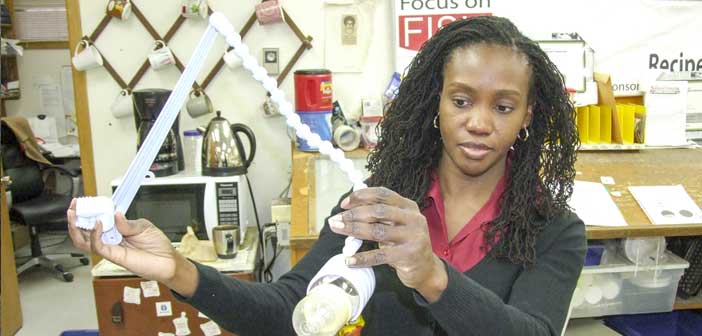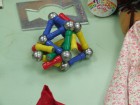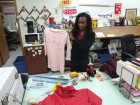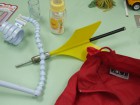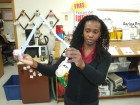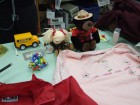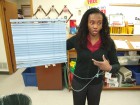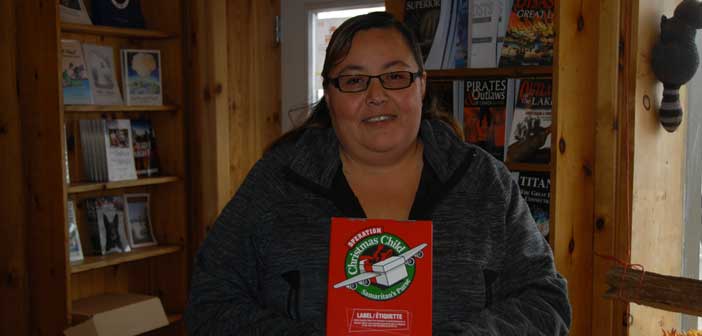Things you don’t want to buy at the local yardsale
LITTLE CURRENT—When a consumer walks into a store in Canada there is a sense of confidence that the products sitting on that store’s shelves are safe to bring home. Ensuring that sense of security is based on fact is the job of people like Health Canada’s Consumer Product Safety Officer Farah-Michelle Manigat. Ms. Manigat dropped by The Expositor’s offices recently to go over how the federal ministry helps to protect Canadian consumers from dangerous or defective products.
Trailing behind Ms. Manigat was a large purple-wheeled suitcase that the safety officer opened to reveal an interior packed to the seams with examples of toys and clothing that do not make the safety grade to be sold by Canadian retailers and are as such banned in Canada. Along with the tools were a set of machined stainless steel tools designed to test toys, soothers and other common items that could present choking hazards for young children.
One example of such a hazard appeared to be every baby parent’s dream machine, an automatic baby bottle holder that can attach to the side of crib, stroller or high chair. “This is banned in Canada,” explained Ms. Manigat. “There is no way for the child to remove this from their mouths.” The result is that a child could easily choke or drown while the parent’s attention was distracted.
One baby soother in the safety officer’s bag appeared to be a safe bet as it did not pass through the opening of the tool. But when a product is likely to be boiled as part of the sterilization process, as a soother will many times over, it also must meet the test after being boiled. A second example of the soother showed that the boiled version had shrunk dramatically, easily slipping through the tool opening—presenting a definite danger to a child’s breath if swallowed.
Ms. Manigat explained that she and her fellow safety inspectors travel to communities across Canada to meet with public health nurses and early childhood educators to deliver presentations on Health Canada’s role in promoting public safety, the types of dangers to be aware of with children’s toys and clothing and how to promote accident prevention.
In addition to the work of the safety officers, Health Canada maintains an active website where consumers can register concerns, find out about the latest recalls and check products, particularly second-hand items to find out if they have been subject to a recall or safety ban.
“Health Canada helps protect the Canadian public from potential health hazards by posting advisories, warnings and recalls from industry concerning consumer products,” explained Ms. Manigat. Those warnings are not meant to endorse any products or companies. “The recall and safety alerts database provides easy access to a comprehensive list of recalls, advisories, and safety alerts,” she explained. “This database includes recalls from Health Canada, the Canadian Food Inspection Agency and Transport Canada.”
There are many hazards that can exist in children’s homes, noted Ms. Manigat, and one of the focusses of their efforts are publicizing those hazards people should look for in their homes. Drawstrings are a particular issue and a number of children have died over the past few years when a drawstring on their jackets or hoodie is caught in playground equipment, but that is not the only source of dangerous strings, she cautioned, holding up a set of blinds.
Ms. Manigat relayed the story of a recent tragedy in which a young child was playing Peter Pan. “The child tied the (blind’s) cord around his neck and climbed up on a chair,” she said. “When he jumped off the chair there was no one there to save him. He hanged himself.”
Any cord that can form a loop is a danger to young children and if the cord hangs down, it can easily become a hazard. Ms. Manigat described another recent incident where a cord dangling from a young child’s jacket became caught in a school bus door. “Luckily the driver noticed in time and the child was not dragged far when the bus left,” she said.
Wherever possible, cordless is best. Even Roman blinds can pose a hazard should one of the slats become detached.
Chemicals in the home can also present a danger to young children and should always be kept out of reach and under lock when young children could be present. That includes grandparents’ homes, where child safety practices might be a little rusty.
The inspectors visit retailers to check on compliance and if they find products that pose a safety hazard they inform the store that the products must be removed from sale. Retailers are usually very compliant. “The only time we usually find an argument is if the retailer is frightened that they are in trouble,” she said. If a retailer balks at removing the items for sale, the inspectors do have the authority under the Canadian Consumer Product Safety Act to seize the offending product.
Another key product that the officers watch for is clothing, especially sleepwear. Loose cotton can be a dangerous material in children’s clothing she explained. “Young children will not know to stop, drop and roll if their clothing catches fire,” she noted.
Health Canada also keeps an eye on many products for adults, including items such as tents, mattresses and even lighters.
While the inspectors do try to keep tabs on consumer products, it is mostly up to manufacturers and importers to ensure that the products they offer for sale meet proper standards. “The onus is on industry,” said Ms. Manigat. All manufacturers and importers are required to report any issues with their products that come to light or are reported to them. “If a company becomes aware of a safety issue, they are obligated to let Health Canada know.”
These rules apply regardless of where the product is manufactured. As many regulations south of the border are not as stringent as those in Canada, that includes products made in the good old USA. Canadian officials have met with their Chinese counterparts to bring them up to date on our standards as well to ensure that exports from that country meet Canadian requirements.
During the Christmas gift buying season, shoppers should pay particular attention to anything that could be pulled off of a toy and be swallowed or present a choking hazard to a young child.
“Make sure the product is age appropriate,” said Ms. Manigat. “Check the label on the toy.” Even if your child or grandchild is amazingly advanced for their age, as most grandparents will surely attest is the case, resist the temptation to move the toy up an age category.
“Make sure there are no small parts,” she said. One of the examples from her voluminous suitcase of maleficent toys is a set of strong magnets that can be formed into various shapes. Those parts can also be easily swallowed and can puncture or perforate a child’s bowels, often with little early evidence beyond a sore stomach for a doctor to go on.
“If a product becomes damaged, check to see if there is a repair kit available from the manufacturer,” she said. “Check on the Health Canada website (www.hc-sc.gc.ca) to check if the product has been subject to a recall.”
The website provides a wealth of useful information to consumers and consumers are encouraged to report any incidents they encounter with a product. On the form available online are places to indicate what happened and the product’s model and/or UPC number.
While Health Canada tries to ensure that all products sold in Canada are safe for consumers, the best line of defence in public safety is an informed consumer.

